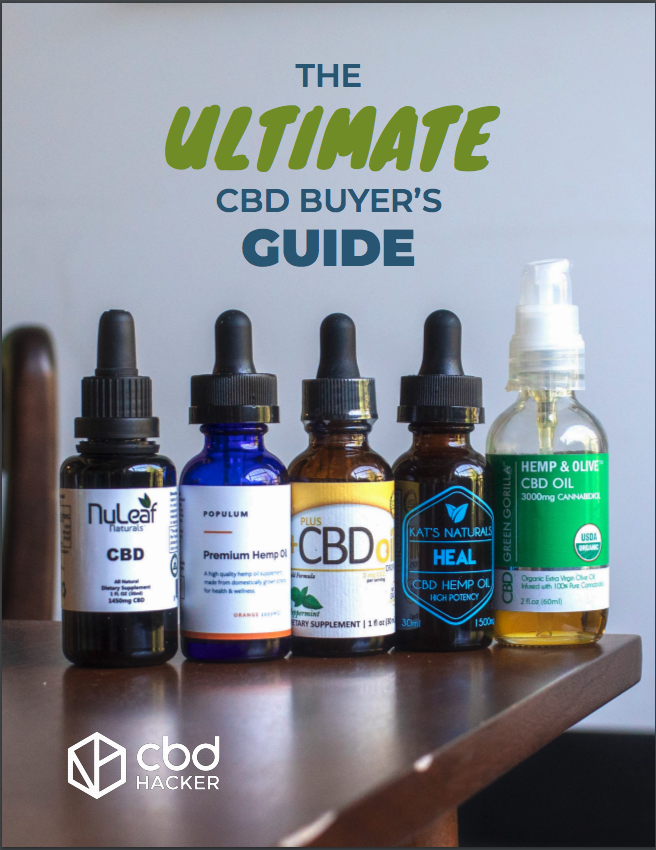Pain is one of the biggest and most complex conditions that CBD may treat. Physicians are still trying to improve their very understanding of pain and how to accurately measure it. After all, they can’t directly see pain; they can only study it through patients’ descriptions.
CBD and cannabis do not function like traditional pain-reduction medications like aspirin or ibuprofen. They don’t act like opioid-based pain relievers either. And yet, more articles, studies, and CBD products are coming out all the time claiming that CBD can treat pain.
We want to help you understand and evaluate these claims, and to determine whether CBD could be right for you. Join us for a deep dive into the world of CBD-based pain remedies.
CBD Oil for Pain: Our Team's Top Picks
Nobody needs to live with pain. CBD oil could offer you the relief you need to heal and rejuvenate. Our team selected a few CBD products—from brands that we’ve fully vetted—that promise to alleviate certain forms of pain. Whether you’re new to CBD or not, check them out below, or see our full ranking of this year’s best CBD oils to learn even more.
Editor’s Choice: NuLeaf Naturals CBD Oil

Ingredients: (Unflavored) USDA-certified organic hemp oil, full-spectrum hemp extract.
Testing notes: Fast-acting. Clear greenish gold. Piney citrus aroma. Distinctively “hempy” with earth, pepper, and pine notes.
When it comes to pain, a higher concentration is in order. Concentration refers to the number of cannabinoids per milligram in a dropper of CBD oil. The higher the concentration, the stronger the effects. The average supplier offers CBD products of approximately 1,000 milligrams. While this is a higher concentration for someone who wants to sleep or relax, you need something more powerful to treat pain.
NuLeaf offers one of the highest concentration CBD oils on the market at 4,850 milligrams. Now, you don’t want to start there. It is best to start at a lower concentration and work your way up gradually. Consult your doctor or dietician every step of the way.
NuLeaf is committed to crafting oils in their purest and simplest form. If a medical use could ever be found for CBD oils, we know NuLeaf would be the lead supplier. All of their products are 100% organic and lab-tested by third parties.
Advantages:
- Extremely pure
- High CBD concentration
- Free shipping.
Disadvantages:
- Pricey
- No flavor options
Best Value: Calm by Wellness CBD Oil

Ingredients: Premium hemp seed oil, natural flavor, stevia extract, ActivAloe.
Testing notes: Clear gold color. Smooth texture. Highly aromatic. Taste and odor conform to flavor selection.
Calm by Wellness (Calm) claims to be “the most recommended and trusted CBD.” At the very least, it is true they are the most widely recognized brand. Whether an Instagram gym rat or a professional yoga instructor, anyone who has tried CBD has probably used Calm. Extracted from organic Colorado-grown hemp, Calm is famous for crafting products to target key afflictions: insomnia, anxiety, and—you guessed it—pain.
Combining their oil with aromatherapy features, Calm oils can relax the muscles, which is critical for the healing process. It also makes Calm a favorite among athletes, active gym-goers, and yoga instructors. This oil is fast-acting and delivers relief deeply into the muscles. Calm by Wellness’ oils also include ActivAloe, a natural aloe vera ingredient that lowers inflammation.
Advantages:
- Excellent taste and odor
- Highly reviewed
- Varied selection
Disadvantages:
- A bit pricey
- No high concentrations
- Incomplete lab test results
Best THC-Free: Kanibi Organic Full Spectrum CBD Oil

Ingredients: Medium-chain triglycerides (derived from coconuts), hemp-derived CBD extract, natural sweetener (MCT oil, stevia), natural flavors, (may contain trace amounts of hemp-derived THC <0.3%).
Testing notes: Yellowish, opaque color. Smell faithful to the selected flavor. Viscous texture.
Kanibi places front and center in their lineup this full-spectrum CBD oil. Full-spectrum has soared in popularity in recent years. It means the final product contains a full range of cannabinoids from the entire hemp plant—including THC. However, the dosage in CBD oil is too small to create the “high” effect as it does in marijuana.
A full-spectrum CBD oil produces a holistic entourage effect that rejuvenates and cleanses. Available in five flavors (their most popular is choco mint), many customers say Kanibi helps them relax and heal. A study in 2005 found that test subjects who were given full-spectrum CBD experienced more relief than those who received a CBD isolate.
The folks at Kanibi are perfectionists. This is not just a good product—it might be the gold standard full-spectrum CBD oil.
Advantages:
- Varied selection
- Above-standard testing
- Good customer service
Disadvantages:
- High pricing
- Strict return policy
- Not 100% THC-free
Highest Concentration: cbdMD Premium CBD Oil

Ingredients: Cannabidiol (CBD), MCT oil, and flavoring.
Testing notes: (Unflavored) Clear green-gold in appearance. Mild, earthy flavor.
cbdMD is on a mission to craft the finest CBD oils in the industry by using state-of-the-art production and manufacturing techniques. All products are THC-free, non-GMO, pro-organic, and pro-vegan. Their manufacturing process is totally unique: While very complex and expensive, it is the only method shown to preserve all the valuable properties of the hemp plant while eliminating every trace of THC.
cbdMD also manages to manufacture CBD with the highest concentration on the market. Regular and long-time users of CBD tend to hover around 1,000 milligrams, but those suffering from pain or inflammation require higher concentrations. NuLeaf boasts a mighty 4,850 milligrams. But cbdMD blows them out of the water with a whopping 7,550 milligrams!
Advantages:
- Varied selection
- High-quality ingredients
- High concentration
Disadvantages:
- Difficult return policy
- Little company transparency
- Very pricey
Best Taste: Populum Full-Spectrum Hemp CBD Oil
 Ingredients: Grapeseed oil, hemp seed oil, virgin coconut oil, cold-pressed orange oil, stevia extract, full-spectrum hemp extract.
Ingredients: Grapeseed oil, hemp seed oil, virgin coconut oil, cold-pressed orange oil, stevia extract, full-spectrum hemp extract.
Testing notes: Light, clear gold. Smells like fresh oranges. Natural, citrusy flavor.
Populum was a CBD pioneer. They led the charge in clearing CBD of its stigma. And they did it while popularizing the full-spectrum extract, which includes the full spectrum of cannabinoids, terpenes, and antioxidants found naturally in hemp plants. All ingredients in Populum products are all-natural, non-GMO, and gluten-free.
Included in the benefits of a full spectrum extract is limonene, a natural terpene that studies show reduces anxiety and inflammation in the muscles and joints. And if the flood of glowing reviews means anything, it is that trainers, coaches, yoga instructors, and active gym-goers have experienced the advantages first-hand. Populum is confident enough in its product to offer a 30-day risk-free trial, which begins the day you receive your package.
Advantages:
- Delicious, citrusy taste
- High-quality ingredients
- Good customer service
Disadvantages:
- Limited selection
- Gelatin capsules (non-vegan)
- No high concentrations
QUICK OVERVIEW: Our Top Picks for CBD Oils for Pain
| IMAGE | PRODUCT | |
|---|---|---|
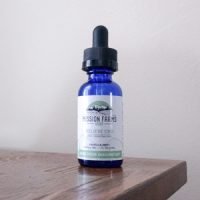 | OUR TOP PICK MISSION FARMS
| CHECK BEST PRICE → |
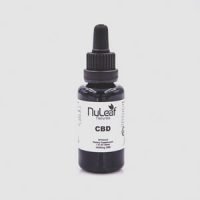 | NULEAF NATURALS
| CHECK BEST PRICE → |
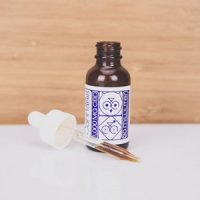 | 4 CORNERS CANNABIS
| CHECK BEST PRICE → |
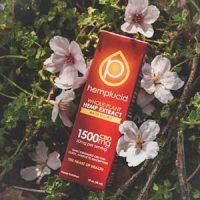 | HEMPLUCID
| CHECK BEST PRICE → |
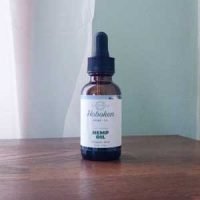 | HOBOKEN HEMP
| CHECK BEST PRICE → |
Table of Contents
Pain is a complicated subject, so we have a lot of ground to cover in this article. If you’re looking for the answer to a specific question, use the links below to navigate directly to the information you need.
- About pain
- About CBD and pain
- CBD oil for acute pain
- CBD oil for chronic pain
- Types of CBD products
- Dosing
- Concerns
About Pain
Pain is a sensation that is transmitted to your brain along your peripheral nervous system.
The nerve endings in this system have receptors called nociceptors. They respond to tissue and nerve damage by relaying pain messages to your brain through electrical impulses.
Generally, doctors categorize pain as either acute or chronic.
Acute pain is a sudden or severe pain that begins from an injury or illness, and goes away as the injury or illness heals or fades. Stubbing your toe or developing soreness from strep throat are examples of acute pain.
Chronic pain is different because it’s persistent and can last for months or even years. It does not always have an obvious root cause and may sometimes be a health condition in and of itself.
Lower back pain and tension headaches are common forms of chronic pain. It is also a common symptom of conditions like multiple sclerosis and fibromyalgia.
Non-physical stimuli like PTSD, substance addiction, and depression can also cause and exacerbate pain. Under these circumstances, the brain makes the nervous system more sensitive to sensing pain.
In extreme cases, the brain can turn ordinarily non-painful actions into painful ones.
About CBD Oil
Cannabidiol, better known as CBD, is a chemical compound found in cannabis plants. You’re most likely to encounter CBD today as an extraction blended into a carrier oil.
CBD oils are generally sold in two varieties: CBD isolate and full-spectrum CBD.
In CBD isolate products, the only cannabinoid present is CBD.
In full-spectrum oils, small amounts of other cannabinoids are also present. Often, these products include trace amounts of THC.
Unlike CBD, THC is psychoactive. But the amount of THC in full-spectrum products is not great enough to induce intoxicating effects.
Cannabis plants are also legally divided into two categories: hemp and marijuana.
Marijuana plants have higher amounts of THC, between 10-20%, and are the typical kind of cannabis plant that people smoke. (A few varieties of hemp are also grown for smoking.) Hemp, on the other hand, is legally defined as any cannabis plant that contains less than 0.3% THC by weight.
Both CBD isolate and full-spectrum CBD can come from either marijuana or hemp plants.
How Do You Use CBD?
You can ingest CBD oil directly by adding it to foods or beverages or dropping it on your tongue. That’s why CBD appears in prepackaged foods and on menus today.
You can also find it in chewable gummies, coffee, and even alcoholic beverages. Ingesting CBD oil through any of these methods is popular because it can help make CBD feel more familiar to new users.
Because the stomach must metabolize the CBD before letting it reach the rest of the body, oral ingestion is not the fastest acting method. However, there are other ways to ingest CBD that let users feel the effects more quickly.
You can apply CBD to your skin in topical ointments and patches. These help release the CBD’s effects rapidly. Vape pens also allow people to inhale CBD into the lungs, where it is quickly absorbed into the bloodstream.
Want to learn more about using these different forms of CBD for pain? Keep reading; we’ll get into more detail further down in this article.
How Does CBD Work?
Although CBD has has many different effects, it primarily interacts with the body through the endocannabinoid system (ECS).
The ECS is a biological system present in most animals. It plays a role in a variety of bodily functions, from mood and appetite to sleep and anxiety.
CBD interacts with the ECS by attaching to cannabinoid receptors along the central nervous system.
When it comes to pain, CBD may provide relief by signaling to the ECS to increase the levels of glutamate and serotonin. These are brain chemicals that help regulate pain.
CBD also has anti-inflammatory properties that can indirectly treat pain.
Unlike opioid-based pain relievers, CBD is not addictive. Some studies suggest CBD can actually help treat aspects of opioid addiction. Other studies suggest cannabis can also complement other pain treatment regimens.
CBD Oil for Acute Pain
Studies have shown CBD to play a role in reducing both acute and chronic pain. But researchers have not found CBD to be particularly effective at treating minor, everyday injuries. When people need quick relief for from things like bruises, scrapes, or even more serious injuries like sprains or fractures, there are more effective analgesics to consider.
Additionally, opioid-based pain relievers are better for treating acute pain when it is severe. These pain relievers act directly on the central nervous system and induce euphoric feelings to counteract pain.
So, how does CBD work to treat pain?
The broadest study done on cannabis and pain focused on the physiological roles that the body’s cannabinoid receptors play in experiencing pain. The study discussed some of the oldest instances of cannabis being used to relieve pain, such as a report from 1899 about cannabis smoke making dogs less sensitive to pain.
Based on these previous studies, the paper claims that there is evidence that cannabinoid receptors mediate the brain’s perception of intense sensations such as heat, cold, and pain. Further, when cannabinoids activate those receptors, they inhibit neurotransmissions associated with pain sensations.
How Does CBD Oil Affect Acute Pain?
CBD appears to inhibit transmission along the transient receptor potential vanilloid receptor 1 (TRPV1), which detects sensations like spiciness from hot foods. The paper found the strongest evidence for this in cases where pain stems from an issue in the central nervous system, such as the nerve disease multiple sclerosis.
Most of the previous research and experiments discussed in the paper didn’t study CBD on its own. Rather, they studied CBD in combination with THC or as one of many compounds in the cannabis plant as a whole. As such, it’s difficult to say exactly how strong of an analgesic CBD can be for acute pain.
CBD and Muscle Soreness
There is one more condition that may not first come to mind when people think of pain, but it certainly can be painful. That is the muscle soreness that occurs after working out or doing a vigorous athletic activity. CBD has known anti-inflammatory properties, and with all the CBD oils and ointments currently marketed for general muscle and soreness relief, CBD is a popular option for anyone exercising or playing sports.
Before CBD extracts became as well-known as they are now, athletes commonly used over-the-counter medications to relieve pain associated with exercising. These medications included aspirin, ibuprofen, and acetaminophen.
Although these drugs can be effective at relieving pain in the short-term, they can do long-term damage to the liver if taken too frequently. Do to its safety profile, CBD is now becoming a popular choice for athletes and non-athletes alike.
Athletes claim that rubbing on CBD ointments after working out is effective at reducing muscle pain and swelling, as well as joint inflammation and stiffness. It can also help athletes get enough rest, which is important for restoring energy and allowing sore muscles to heal before exercising them again.
There is plenty of anecdotal evidence from both athletes and sports physicians about the effectiveness of CBD for treating workout pain. However, there is a lack of conclusive scientific evidence. Not many studies have looked specifically at CBD as an athletic pain reliever, but there have been some examining cannabis more broadly.
For instance, in a 2018 scientific literature review, a group of researchers learned that some athletes who engage in high-risk sports are more likely to use cannabis. They also saw that cannabis seems to help with both pain management and reducing concussion symptoms.
CBD for Chronic Pain
Most people find that CBD is not an especially powerful pain reliever on its own. And in cases of severe pain, it is usually not a replacement for prescription pain relievers.
But it can be especially useful for dealing with types of pain that are notoriously difficult to treat.
CBD for Multiple Sclerosis
One of the most well-documented instances in which CBD can treat chronic pain is in multiple sclerosis (MS) patients. MS is a disease in which the body’s immune system attacks the central nervous system. It damages protective insulation around nerve fibers. As a result, this damage leaves behind scars and sends mismatched signals through the nervous system that can result in chronic pain.
Full-spectrum CBD oil has been shown to relieve pain from MS. Specifically, studies suggest that the THC found in full-spectrum products may play a bigger role in MS-related pain relief than CBD does. However, CBD has been shown to treat some MS symptoms like inflammation and muscle spasms, which are common secondary causes of pain.
By reducing those symptoms, CBD can indirectly relieve pain in MS patients. And unlike pharmaceutical muscle relaxants prescribed for MS, CBD is not a sedative. That means it’s not disruptive to take during the day.
Arthritis
Another painful illness for which CBD can help treat is arthritis.
Arthritis is not a single disease, but a way to categorize dozens of types of joint pain. The two most common types of arthritis are rheumatoid arthritis, in which a person’s immune system mistakenly injures their joints, and osteoarthritis, in which a person’s cartilage breaks down and causes painful knobs to form on the ends of bones.
By reducing inflammation in joints and between damaged bone ends, CBD can indirectly relieve the pain caused by the condition.
So, how does it work?
One way CBD can reduce inflammation is by stimulating cannabinoid receptors located on immune cells. Stimulating these receptors suppresses the secretion of chemicals that would cause inflammation.
More recently, these receptors have also been found to regulate some interactions between the ECS and certain opioid receptors. This suggests that these receptors may also modulate pain in more direct ways.
For arthritis patients, studies show that applying CBD ointments to the skin around sore and swollen joints can reduce pain and swelling.
Arthritis patients in clinical trials have also found pain relief by taking Sativex, a pharmaceutical that combines roughly equal parts THC and CBD into an oral spray (Sativex has not obtained FDA approval for use in the US at this time).
One study suggested that the drug can be an especially effective pain reliever on three fronts. First, THC acts as a slight pain reliever, then the CBD reduces pain-inducing swelling, and finally the THC and CBD interact with each other to enhance their individual effects.
People call this beneficial interaction between CBD and THC the entourage effect. Often, people cite this effect to explain why full-spectrum CBD products seem to be more effective at treating illnesses than CBD isolate.
CBD for Migraines
Migraine headaches are another common but similarly difficult to treat condition that CBD may help.
During a migraine, serotonin levels drop. This drop makes a main nerve in the head release chemicals that bring on severe, throbbing pain on one side of the head.
The causes of migraines are not fully known, but some common triggers include: hormonal changes in women (notably during menstruation or pregnancy), salty or processed foods, alcohol, caffeine, stress, and certain medications.
Migraine sufferers have used cannabis since as far back as the late 19th-century, when physicians recommended smoking it. However, more recent studies have shown mixed evidence for using cannabis to treat migraines.
In an old study from 1985, researchers found that THC increased serotonin production in migraine patients’ blood samples. However, CBD did not appear to cause the same increase. So the study concluded that THC, but not CBD, may have therapeutic effects for migraine patients.
A more recent paper from 2016 examined how imbalances in the endocannabinoid system may affect migraines. After comparing existing literature on this theory, researchers concluded that interacting with cannabinoid receptors in the ECS may treat migraine symptoms.
Researchers also read that migraine patients generally did not enjoy or respond well to being treated with high concentrations of THC. They suggested that adding CBD could make this kind of treatment both more effective and pleasant.
Finally, in a 2018 paper, researchers administered a questionnaire to understand how cannabis users treat different chronic pain conditions. Of the 2,000 responses, 445 of them were treating migraine headaches by smoking cannabis. Of the migraine sufferers, many preferred cannabis strains that had relatively high ratio of THC to CBD.
In the end, more research needs to be done to better understand what parts of cannabis can be used to treat migraines.
Fibromyalgia
Fibromyalgia is another condition that results in chronic pain. The disorder is characterized by widespread pain throughout the muscles, joints, tendons, and bones.
Fibromyalgia has no known cause, but research suggests that issues with the neurological system may be at play. Patients often experience pain from light touches and bumps that would otherwise not register as painful.
Prescription drugs can treat the painful symptoms of fibromyalgia, but there is currently no cure. The most-used drugs act on the pain by blocking the brain’s flow of sodium, or by influencing the re-uptake of serotonin and norepinephrine.
Cannabis may or may not be a promising route for treating this difficult disorder.
In a study from 2008, fibromyalgia patients were given nabilone, a prescription drug made of synthetic THC. Over four weeks, patients reported significant reductions in pain, albeit with some side effects. This led the researchers to claim that nabilone has potential as a safe and effective treatment for fibromyalgia pain.
Then, in a different study from 2011, researchers surveyed a group of fibromyalgia patients about how they were using cannabis to treat their disease. In the paper, researchers observed 28 patients who all felt less pain and stiffness after either smoking or ingesting cannabis.
However, later research has not confirmed the same results. More recent papers even found that nabilone only slightly reduces pain in fibromyalgia patients.
Of course, some fibromyalgia patients still use cannabis to treat their illness. In 2018, researchers in Israel conducted a survey of several hundred fibromyalgia patients on their cannabis use. Many participants reported smoking cannabis for their fibromyalgia, and more than 90% reported experiencing pain relief because of it.
Allodynia
Allodynia is a condition in which a person experiences an unusual amount of pain in response to normally painless stimuli. For example, a person may feel pain from a light touch on their arm or even from something brushing their hair.
Allodynia can be a common symptom of many nerve diseases. Because it doesn’t have an obvious, visible cause, it can be difficult to cope with.
Allodynia expresses itself in three main ways:
- Mechanical: being stimulated by external touches on the hair or skin
- Thermal: perceiving average external temperatures as being either extremely hot or cold
- Movement: being triggered by normal movement of joints or muscles
One study involved rats and the chemotherapy drug Paclitaxel, which can trigger all three types of allodynia. Researchers examined how CBD may help protect against those conditions.
In the experiment, rats who were given oral CBD before being injected with Paclitaxel showed reduced signs of both thermal and mechanical allodynia.
Preventative Treatment
Interestingly, cannabinoids don’t only treat pain after an injury or illness occurs. They appear to be able to prevent certain kinds of pain if taken beforehand as well.
In one study, researchers found that CBD was able to pre-treat rats against chemically-induced pain.
For the experiment, researchers gave some rats CBD before injecting them with paclitaxel, a common chemotherapy medication used to treat many types of cancer. Paclitaxel causes aching pain all over patients’ bodies and especially in nerve endings in their extremities.
The rats given CBD exhibited significantly less painful stimulation after receiving Paclitaxel than the rats that were not pre-treated with CBD. This suggested that CBD may not only benefit cancer patients taking Paclitaxel, but that CBD may help prevent pain for cancer patients on any number of chemotherapy medications.
These studies and examples show some extent of CBD’s capabilities for treating familiar types of chronic pain. But CBD may also be useful in treating conditions involving more elusive types of pain.
Best CBD Oil for Pain: Choosing a Delivery Method
Considering how many different ways there are to take CBD, it may not be obvious which methods are best suited for treating pain. Which method you use is entirely up to your preferences and situation.
There’s a lot to consider when figuring out which CBD method be best for you. So, here’s an overview of the many CBD ingestion methods, with all their pros and cons.
Sublingual CBD Oils for Pain
Sublingual oils are probably the most familiar CBD products for most people. They are what people usually mean when they talk about “CBD oil.” In the most basic sense, these products consist of an oil with a certain amount of CBD extract dissolved.
Manufacturers often use hemp seed oil as the base for the CBD oil products. Unlike more common oils like olive oil, hemp oil doesn’t have a strong or bright taste. Its flavor is mellow and slightly nutty, which some people enjoy.
Hemp seed oil isn’t the only available carrier oil for CBD, though. A number of CBD oil brands use coconut oil, which is a popular for having its own health benefits.
In addition, you can find CBD products that include essential oils — everything from peppermint and eucalyptus to rosemary and clove — and natural or artificial flavorings, like mint or vanilla. These additions may provide secondary health benefits or therapeutic effects, but generally they simply offer consumers more varieties to choose from.
Sublingual CBD oils are perhaps the simplest and most versatile to consume. You can take them orally by placing a couple drops directly on your tongue or adding them to coffee, smoothies, salad dressings, marinades, or baked goods.
Taking CBD through a sublingual oil is good for mild pain, since it takes time for your stomach to metabolize the CBD and feel its effects throughout the body.
Although the onset time is somewhat delayed, the effects will stay around for a while. That makes this method ideal for those who prefer to take CBD at a few, regimented times each day, like you would with a prescription medicine.
CBD Vape Oil for Pain
If you need fast-acting pain relief, vaping CBD might be the perfect method.
Most CBD vape juices mix CBD with vegetable glycerin, a clear liquid made from soybean, coconut, or palm oil. When the pen heats up the vape juice, it creates a vapor containing CBD particles.
Your lungs contain many blood vessels, so inhaling CBD vapor is a quick way to get CBD into the bloodstream and move it around the body. This makes vaping CBD an ideal method for those seeking immediate pain relief.
Although it may seem contradictory, vaping CBD can also be helpful for people suffering from allergies or asthma. There is some scientific evidence and a good deal of anecdotal claims that vaping CBD can reduce inflammation and relieve painful coughing associated with asthma.
However, CBD vapor does not have the same staying power as something like CBD oil.
It’s also hard to measure a consistent dose with vape pens, so for these reasons, vaping CBD is best for relieving short-term pain or pain associated with inflamed airways.
It’s also important to note that there is a lack of research around the safety concerns of vaping CBD in general and the long-term effects of vaping CBD and other e-liquid products.
That’s why it may be best to proceed with caution before vaping CBD and definitely consult with your doctor if you have any underlying respiratory conditions.
CBD Topicals for Pain
Topical CBD products can provide relief to the application area, so they work well for targeting site-specific bodily pains.
Topical CBD creams, balms, or salves absorb directly into the skin, providing fast and consistent relief. You can also easily re-apply them whenever the effect wears off, making them great for treating painful areas that need constant attention.
If you have sore muscles or joints, either from exercise or injury, topical products are a great CBD option. CBD’s natural anti-inflammatory properties can also reduce swelling, which is oftentimes both a symptom and cause of pain.
People suffering from arthritis have found topical CBD to help not only reduce pain and inflammation, but also to improve their mobility. For most types of pain in isolated areas, topical CBD is a superb option.
Transdermal CBD Patches, Creams, and Gels
Similar to topical CBD products, transdermal CBD applications are also effective for delivering CBD treatment.
The main difference between topical and transdermal products is that topical products act only on the area of application. Transdermal products, on the other hand, penetrate the skin to reach the bloodstream. This allows them to act on the entire body. In this sense, you can think of transdermal CBD patches like any other medicated patch. They deliver a steady dosage of CBD throughout the day and can simultaneously treat pain across multiple areas of the body.
Like topicals, transdermal CBD can also help with pain and inflammation from arthritis. But transdermal products may be preferable for patients with arthritic pain in more than one area. Since they are longer lasting than most topical products, you can also apply transdermal products before going to sleep if you need relief overnight.
Pain Relief with CBD Capsules
Next to sublingual oils, CBD capsules are one of the most common forms of CBD available today. They are usually gel capsules that you can swallow like any number of capsule medications. They then dissolve in the stomach before entering the bloodstream and moving around the body.
You can take CBD capsules similarly to sublingual oils, for when you need long-lasting relief.
CBD capsules have a slow onset time before the effects kick in. But if you don’t like the taste of sublingual oils, they’re a great way to get small or large amounts of CBD into your system.
Capsules are also more discreet than oils, so if you are worried about taking CBD in a workplace or out in public, these are a convenient way to make sure you can always get your treatment.
Edibles
CBD edibles have become hugely popular at cafes, restaurants, and cannabis dispensaries everywhere. You can also find CBD-infused gummies, candies, and chocolates. These are an especially great choice if you don’t want to take oil or capsules.
Although CBD treats are often made by adding sublingual oil to a baked good after it’s finished baking, they don’t tend to taste much like CBD oil. The flavors from the food stand out more, letting you really enjoy your CBD consumption.
Because you must digest and metabolize CBD edibles before the effects kick in, you can treat them similarly to sublingual oils and capsules. Meaning they are best for treating long-term, generalized pain, rather than short-term, site-specific pain. Just make sure that the product’s dosage is high enough to have a beneficial effect.
CBD Flower for Pain
Most people associate getting high with smoking cannabis. But there are definitely smokeable (and vape-able), CBD-specific strains designed to minimize the psychoactive effects that cannabis is known for.
If you live in a state where cannabis is legal, there are a number of marijuana strains with high CBD-to-THC ratios. Smoking these will provide all the benefits of CBD and cut down the “high” feeling that normally comes from smoking marijuana. Plus, the presence of THC has been known to enhance the anti-inflammatory and analgesic effects of CBD. This reaction is known as the “entourage effect.”
For people who want to avoid the “high” sensation at all costs, there are even CBD-rich varieties of hemp that you can purchase in flower form for smoking. You can also vape these products using a dry herb vaporizer.
Inhaling smoked or vaped CBD flower has a similar effect to vaping CBD oil. That’s because the CBD is getting into the body through the lungs. So, smoking cannabis can deliver immediate but not long-lasting pain relief throughout the body.
Smoking CBD flower can help treat pain in many different areas all at once. But because of the health concerns from inhaling burnt particles, this method is not right for everyone. It may also be unhelpful for people with asthma or respiratory issues because the smoke can irritate those areas.
Determining the Best CBD Dosage for Pain
It’s important to understand the many varieties of CBD products available and what they can and cannot do to treat pain. And it’s just as important to know how much to take in order to experience the desired effects.
Currently, doctors do not prescribe CBD products (with the exception of the FDA-approved seizure medication Epidiolex).
This is partly because most doctors haven’t thoroughly studied CBD, but also because there isn’t enough known about CBD to develop accurate and consistent dosage regimens across a wide variety of people. Doctors may be able to recommend CBD to their patients, but it’s up to their patients to figure out the dosages that work best for them.
Think About the Issues You Want to Address with CBD
Make sure you have an idea of what treatment or relief looks like to you.If you suffer from migraines and you’re looking for something else to relieve your pain and discomfort, then CBD may be a great option. But if you want to prevent yourself from ever getting another migraine for the rest of your life, you’d be expecting too much from CBD.The issues you want to treat will also help you decide which kinds of CBD product(s) to use. So while a transdermal patch may work well if you have arthritis, the patch may not be so great if you have an asthma flare up and need immediate relief.
Consider the Concentration, or Potency, of CBD
All reliable CBD products have their concentration listed clearly on the label. The concentration refers to the total amount of CBD in a product, measured in milligrams per serving.It’s difficult to say which amounts will work best for you. For this reason, the safest route is to begin with a lower dose and gradually work your way up until you get the effects you’re looking for.Generally speaking, products with lower concentrations can contain between 5-15 milligrams of CBD per milliliter. Higher potency products can go all the way up to 50 or 60 milligrams per milliliter.Of course, CBD affects everybody differently. Lower concentrations may feel high to some people, and higher concentrations may feel low to others. Heavier people tend to need higher concentrations but that’s not always the case, so take your time in finding the best dose for you.
Figure out How Often to Take CBD
Like figuring out the right concentration, your dosing frequency is also a personal preference.It’s best to begin by taking it infrequently, no more than once a day. Then, once you’re familiar with how CBD affects you, you can gradually start taking it more often until you’ve found a regimen that works for you.If you suffer from a chronic pain condition, you may find that you need to take CBD every couple of hours, or even as much as every hour. But if you’re treating acute pain, you may find that you only need it a few times a day or only when the pain flares up.
Concerns About Using CBD Oil for Pain Relief
Although the World Health Organization declared CBD to have a generally good safety profile, there are some issues to be aware of when taking CBD.
Can CBD Oil Interact With Prescriptions?
CBD may interact with other medications. That’s because it’s metabolized by a group of liver enzymes that is also responsible for breaking down many common pharmaceuticals. As a result, the effects of those drugs may feel either more or less intense than normal.
Before beginning to take CBD for pain treatment or any health conditions, talk with your doctor to make sure you won’t experience unexpected interactions with any other medications you’re taking. Your doctor may want to adjust your medications to ensure that you continue to get the appropriate dose.
Can CBD Oil Cause You to Fail a Drug Test?
The second main concern with CBD is whether or not it can make you fail a drug test. Because CBD itself does not show up on drug tests, it might seem obvious that it poses no risk for failing a drug test. Furthermore, the amount of THC present in full-spectrum CBD products is generally thought to be too low to show up on drug tests.
However, it’s not unheard of for people taking CBD to fail a drug test. Even people taking CBD isolate, with no THC in it, have stories of failing drug tests. If you’re considering using CBD in addition to other pain medications or to reduce your reliance on opioids, or are in another situation where you can’t afford to fail a drug test, you should talk to your healthcare provider and/or probation officers before adding CBD to your diet.
There is also a possibility that the digestive system can turn CBD into a THC metabolite. And it’s possible for those metabolites to show up on drug tests. So, no matter how expensive or cheap a CBD product is, manufacturers cannot guarantee that their CBD products won’t cause you to fail a drug test.
To address claims that their products have caused users to fail drug tests, many CBD brands have started adding disclaimers about drug tests.
CBD Oil for Pain: What’s the Takeaway?
CBD can generally help treat both acute and chronic pain to some degree.
Peer-reviewed studies show reliable evidence to support claims that CBD can serve as a mild pain reliever and anti-inflammatory agent.
Specifically, CBD seems best-suited for treating chronic pain caused by conditions in the nervous system or joints. However, in severe cases, CBD is not a replacement for stronger pain relievers. Overall, we need more research needs to better understand how CBD can treat pain.
With that deeper knowledge, we can hopefully find even more ways to better use CBD to treat pain.





